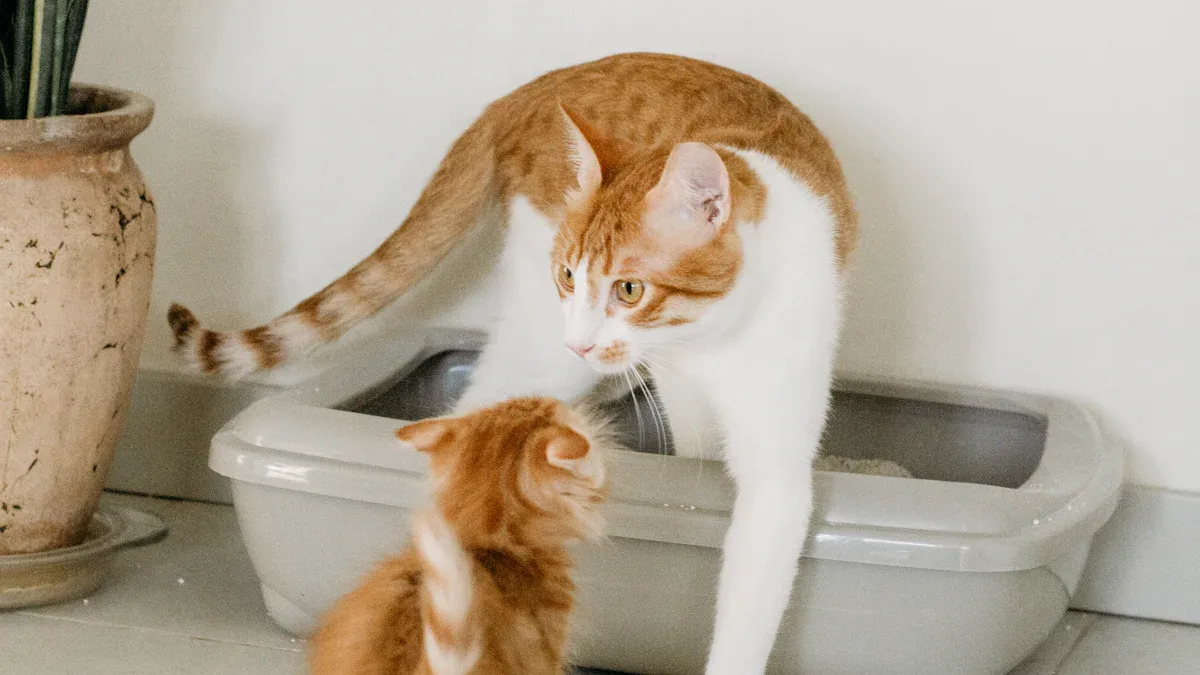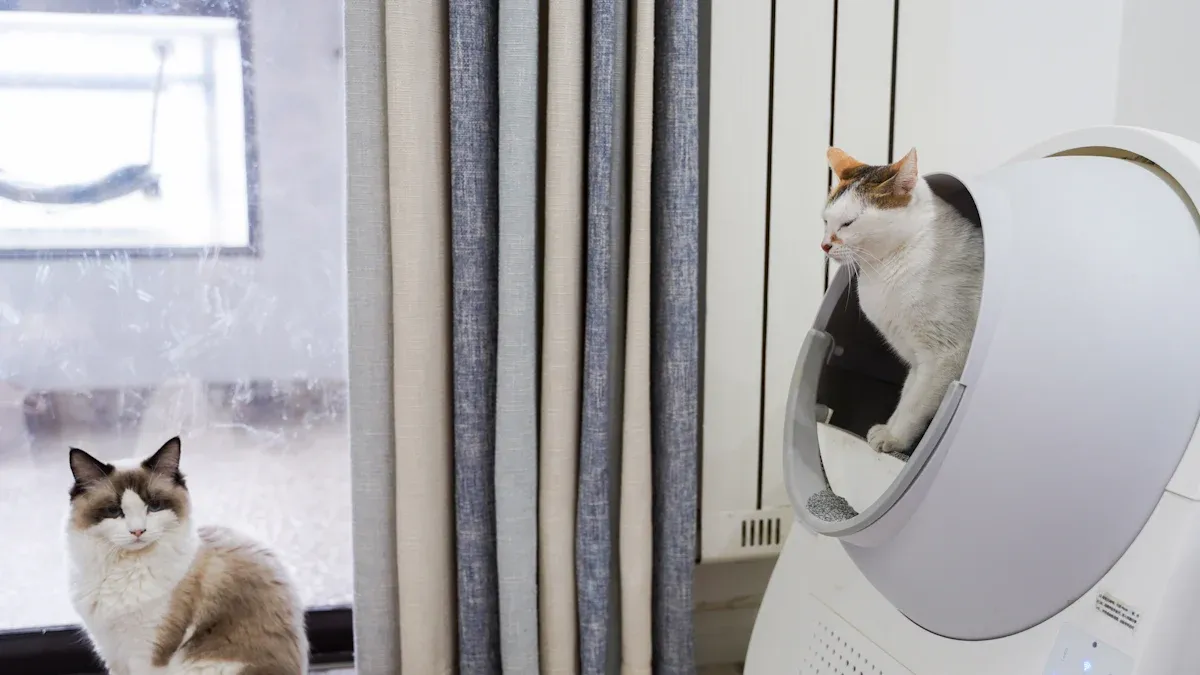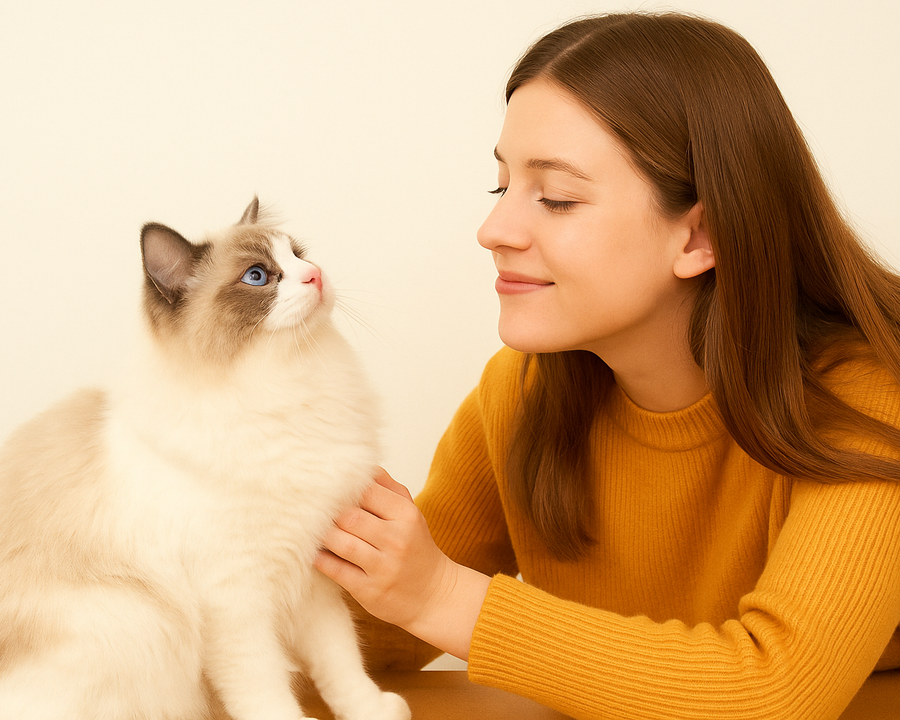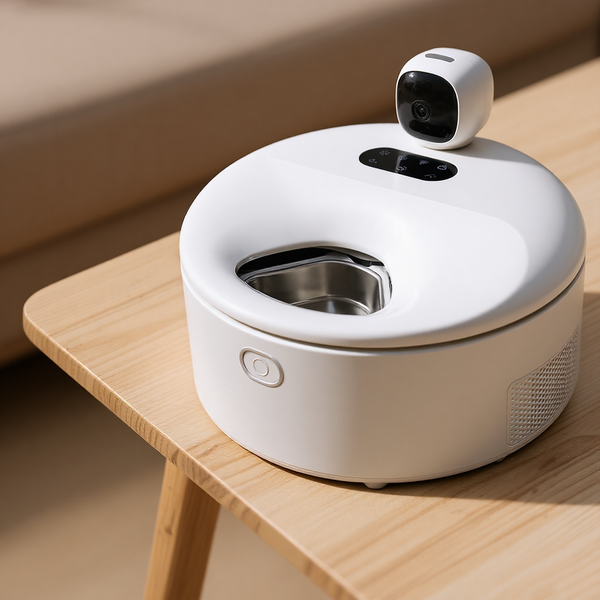
Choosing the best litter box for your cat comes down to what your furry friend needs most. If you have an agile adult cat, a top entry cat litter box might keep your floors cleaner and control odors well. Kittens or senior cats often prefer side entry boxes. Your cat’s age, mobility, and habits matter. Both styles offer their own benefits and drawbacks, so you want to match the box to your cat’s personality and your home setup. 😊
Key Takeaways
-
Pick a top entry litter box for adult cats that move well. It keeps litter inside and helps stop bad smells.
-
Use a side entry litter box for kittens or older cats. It is easy to get into and feels good for cats who can't move much.
-
Think about how your cat acts and what it likes. Some cats want privacy. Others want to look around.
-
Clean the litter box often. Scoop every day and wash it once a week. This keeps your cat happy and your house smelling nice.
-
When you get a new box, wait and be calm. Give your cat time to get used to it. Use smells your cat knows to help them try it.
Types of Cat Litter Boxes
Top Entry Cat Litter Box
You might notice that a top entry cat litter box looks different from the usual box. Your cat enters through a hole on the lid, which sits on top of the box. This design keeps most of the litter inside, so you see less mess around your floors. The box has high sides and a covered top, which gives your cat privacy while doing their business. Many cats like this quiet space. If you have a playful dog or a curious toddler, the top entry style helps keep them out of the litter.
A top entry cat litter box works best for adult cats who can jump or climb easily. Kittens or older cats may find it hard to get in and out. You also save space because the box is tall and compact. Cleaning can be simple, since you just lift the lid and scoop. Some people say this style traps odors better, so your home smells fresher.
Tip: If your cat loves privacy and you want less litter on your floors, try a top entry cat litter box.
Side Entry Litter Box
A side entry litter box has an opening on the side, close to the ground. Your cat walks straight in, which makes it easy for kittens, seniors, or cats with mobility issues. This style looks more like a regular box, so most cats feel comfortable using it right away. You might see more litter outside the box, since your cat can kick or drag it out when leaving.
Side entry boxes are easy to clean. You can reach in from the side and scoop without lifting a lid. If you have more than one cat, everyone can use the box without trouble. This style does not trap odors as well as a top entry cat litter box, but it works for homes where you want quick access and simple cleaning.
Here’s a quick comparison to help you see the differences:
|
Feature |
Top Entry |
Side Entry |
|---|---|---|
|
Privacy |
Offers privacy |
Accessible for all cats |
|
Litter Containment |
Contains litter well |
Can be messier |
|
Odor Control |
Traps odors |
Odors escape more easily |
|
Space Efficiency |
Takes up less space |
May take up more room |
|
Accessibility |
Not ideal for kittens/seniors |
Easy for all cats |
|
Pet Prevention |
Keeps dogs out |
May not keep dogs out |
You can choose the style that fits your cat’s age, health, and your home’s needs. Both types have their own strengths, so think about what matters most for you and your furry friend.
Top Entry Cat Litter Box Pros and Cons

Litter Tracking
You probably want less mess around your home. A top entry cat litter box helps keep litter inside the box. The high sides and covered design stop your cat from kicking litter out. When your cat climbs out, most of the litter falls off their paws before they touch the floor. This means you spend less time sweeping up after your cat.
Here’s a quick look at how the design works:
|
Feature |
Impact on Litter Tracking |
|---|---|
|
Higher sides |
Stops litter from flying out during use |
|
Enclosed design |
Litter falls off paws before leaving the box |
|
Traditional boxes |
More litter escapes due to lower sides |
If you want cleaner floors, this style makes a big difference.
Odor Control
No one likes a smelly house. You’ll notice that a top entry cat litter box traps odors better than open boxes. Many cat owners say their homes smell fresher after switching. The lid keeps smells inside, so you don’t get hit with a strong odor every time you walk by.
-
Many users report less litter odor in their homes.
-
Popular models get high ratings for odor control.
-
Most customers recommend this style for keeping smells down.
You can enjoy a cleaner, fresher space with this box.
Privacy
Cats love privacy. When you use a top entry cat litter box, your cat gets a quiet, private spot. The lid and high sides make the space feel safe. Most cats like to do their business in peace, away from noise and people.
-
Place the box in a quiet area for best results.
-
Larger boxes with clumping litter help cats feel comfortable.
Some cats may not like the darker, enclosed space. You know your cat best, so watch how they react.
Accessibility
Think about your cat’s age and health. A top entry cat litter box works well for healthy adult cats. They jump in and out with no trouble. Kittens, older cats, or cats with mobility issues may struggle. Climbing up and dropping down can be hard for small or stiff cats.
-
Kittens may find it tough to climb in.
-
Senior cats often have joint pain and need easier access.
-
Disabled cats may avoid the box if it’s too hard to reach.
Top entry boxes require your cat to climb up, drop down, do their business, and climb out again. This can be too much work for cats who are unwell or have trouble moving.
If your cat has trouble getting around, you might want to choose a different style.
Cleaning
You want cleaning to be easy. With a top entry cat litter box, you just lift the lid and scoop. The enclosed design keeps litter inside, so you don’t have to clean up as much around the box. The smooth surfaces make it simple to wipe down. Stainless steel models resist odors and bacteria, so they stay fresh longer.
You spend less time cleaning the area and more time enjoying your cat.
Multi-Cat Use
If you have more than one cat, you need a box that works for everyone. Cleanliness matters most in multi-cat homes. Cats like clean boxes and may avoid dirty ones. You should scoop waste often to keep all your cats happy. The design and accessibility of the box matter, especially if your cats have different ages or health needs.
-
Regular cleaning keeps cats using the box.
-
Cats prefer clean litter over dirty litter.
-
More cats mean you need to check the box often.
A top entry cat litter box can work in multi-cat homes, but make sure every cat can use it easily.
Side Entry Litter Box Pros and Cons
Litter Tracking
You might notice more litter around your home when you use a side entry litter box. The lower walls and open side make it easy for your cat to walk in and out, but they also let litter escape. When your cat digs or kicks, some litter can fly out the side. As your cat leaves the box, litter often sticks to their paws and ends up on your floor.
Here’s a quick comparison to help you see the difference:
|
Feature |
Top-Entry Litter Box |
Side-Entry Litter Box |
|---|---|---|
|
Litter Containment |
High walls keep litter inside |
Lower walls let litter escape |
|
Messiness |
Less messy |
More messy |
|
Cat Adaptability |
Some cats struggle to adapt |
Easier for all cats |
If you want less mess, you may need to sweep more often with a side entry box. Some people place a mat outside the box to catch stray litter.
Odor Control
Odor control can be a challenge with side entry boxes. The open design lets smells escape more easily than a top entry box. You might notice odors sooner, especially if you have more than one cat or if you forget to scoop daily.
-
Enclosed boxes help trap odors, but side entry boxes offer more airflow.
-
Good ventilation keeps the box fresh, but too much odor can make your cat avoid the box.
-
Some side entry boxes include filters or covers to help with smells.
Tip: Scoop the litter at least once a day and change it often. This keeps odors under control and your cat happy.
Privacy
Cats like privacy, but not all cats want to feel closed in. Side entry boxes give your cat a discreet spot to do their business, but they still let your cat see what’s going on around them. Shy or anxious cats often feel comfortable in a side entry box because it feels open but still offers some cover.
-
Many cats prefer an open box with good visibility and airflow.
-
Some cats like extra privacy, which a top entry box provides.
-
If your cat seems nervous, try placing the box in a quiet corner.
You know your cat best. Watch how they act and choose the style that makes them feel safe.
Accessibility
Side entry litter boxes shine when it comes to accessibility. You don’t have to worry about your cat jumping or climbing. Kittens, senior cats, and cats with mobility issues can walk right in. The low entry makes it easy for every cat to use the box without help.
-
Senior cats and kittens often struggle with high-sided or top entry boxes.
-
A front-entry or low-sided box works best for less agile cats.
-
If your cat has arthritis or is recovering from surgery, a side entry box is a gentle choice.
You make life easier for your cat when you choose a box they can use comfortably.
Cleaning
Cleaning a side entry litter box is usually simple. You can reach in from the side to scoop out waste. The open design gives you easy access to every corner. If you use a stainless steel box, you’ll find it resists odors and bacteria better than plastic.
-
Side entry boxes are easy to wipe down and keep fresh.
-
Stainless steel models stay cleaner and last longer.
-
You may need to sweep around the box more often because of litter tracking.
Note: A regular cleaning routine keeps your cat healthy and your home smelling good.
Multi-Cat Use
If you have more than one cat, a side entry box can work well. Every cat can use the box without waiting or struggling to get in. The open design means no one feels trapped or cornered. Just remember, more cats mean you need to scoop more often.
-
Multi-cat homes need bigger or extra boxes.
-
Cats like clean litter, so check the box often.
-
Easy access helps every cat feel comfortable sharing.
You can keep all your cats happy by choosing a box that fits everyone’s needs.
Choosing the Right Box
Cat’s Age and Mobility
Your cat’s age and how easily they move play a big role in picking the right litter box. Kittens and older cats often need boxes with low sides so they can step in without trouble. If your cat weighs over 6 pounds and jumps well, a top entry cat litter box might work. Bigger breeds like Maine Coons need large trays, about 22–28 inches long, so they can turn around easily.
|
Suitable For |
Notes |
|
|---|---|---|
|
Semi-covered trays |
Kittens and adults |
Balances comfort and odor control. |
|
Top-entry models |
Cats over 6 lbs |
Only if the cat can jump in and out. |
|
Large trays |
Bigger breeds |
Should be 22–28 inches for comfort. |
|
Open trays |
Kittens |
Low and open for trust and habits. |
Older cats may avoid boxes that are hard to enter. If your cat struggles to turn or balances on the rim, waste can end up outside the box.
Cat’s Behavior
Every cat has their own habits. Some like to dig deep, so a litter depth of 2-3 inches helps them bury waste. Texture matters too. Some cats prefer fine, sand-like litter, while others like bigger grains. Strong scents can bother cats, so natural odor control works best.
Tip: Watch your cat’s digging and burying style. Choose a box and litter that match their comfort.
Home Setup
Your home setup affects your choice. You need a box that fits your space and your cat’s needs. Pick a spot that feels safe and private. Make sure the box is at least 1.5 times your cat’s length, not counting the tail. Avoid placing the box near food or water bowls.
-
Choose unscented or lightly scented litter.
-
Place boxes in easy-to-reach spots.
-
Keep boxes uncovered if your cat likes security.
-
Clean the box often.
Multi-Cat Homes
If you have more than one cat, you need more than one box. Cats like to use different boxes for pee and poop. Bigger boxes (86 cm by 39 cm) work better for groups. Follow the rule: one box per cat, plus one extra. Mix covered and uncovered boxes to suit all cats.
|
Preference |
Description |
|---|---|
|
Multiple Boxes |
Cats may want separate boxes for urination and defecation. |
|
Size Preference |
Larger boxes reduce stress and accidents. |
Note: Enough boxes help prevent fights and accidents outside the box.
Cleaning Routine
A clean box keeps your cat happy. Scoop clumps twice a day. Change all the litter once a week and wash the box with warm water. Skip strong soaps and let the box dry before adding fresh litter.
-
Scoop waste as soon as your cat uses the box.
-
Dump and wash the box weekly.
-
Avoid artificial fragrances.
-
Dry the box before refilling.
If you want to make feeding and cleaning easier, check out trusted brands like Petcantalk. Their products, like the Polar Smart Wet Food Feeder, help you care for your pet with less mess and more convenience.
Transition Tips
Introducing a New Box
Switching your cat to a new litter box style can feel tricky, but you can make it easier with a few simple steps. Here’s a plan that helps most cats adjust:
-
Keep the old box nearby. Don’t remove it right away. Let your cat get used to the new box at their own pace.
-
Make the new box appealing. Always keep it clean and fresh. Cats love a tidy spot.
-
Add a familiar scent. Sprinkle a bit of used litter from the old box into the new one. This helps your cat recognize the new spot.
-
Leave the lid off at first. If your new box has a cover, wait before putting it on. Your cat will feel safer exploring an open box.
-
Give your cat time. Be patient and offer treats or praise when your cat uses the new box.
Tip: Some cats need a few days or even a week to feel comfortable. Watch for signs your cat is curious or using the new box.
Encouraging Use
You want your cat to feel happy with their new litter box. Try these ideas to help:
-
Place the box in a quiet, private spot away from food and water.
-
Test different box shapes or sizes if your cat seems unsure.
-
Use fine, sand-like litter. Most cats like this texture.
-
Stick with the same litter once your cat approves.
Note: Cats love routine. Once you find what works, keep things the same.
Troubleshooting
Sometimes, your cat may avoid the new box. Don’t worry—this is common. Here’s how you can help:
-
Place the new box next to the old one for a few days.
-
Move the new box to its final spot slowly.
-
Clean the box often. Cats avoid dirty boxes.
-
Make sure the box is easy to enter and big enough.
-
Try the same litter your cat already likes.
-
If your cat still refuses, check for health issues with your vet.
Cats are sensitive to change. Stay patient and gentle, and your cat will soon feel at home with their new box.
Choosing between top entry and side entry litter boxes depends on your cat’s age, habits, and your home. Here’s a quick look at the key differences:
|
Feature |
Top Entry |
Side Entry |
|---|---|---|
|
Litter Tracking |
Less mess |
More scatter |
|
Odor Control |
Traps odors |
Odors escape |
|
Privacy |
More private |
More open |
|
Accessibility |
Harder for kittens/seniors |
Easy for all cats |
You want a box that fits your cat’s size and lets them dig and turn easily. Make sure you scoop daily and offer choices. Trusted brands like Petcantalk make cleaning easier and keep your home fresh. 🐾
FAQ
What if my cat refuses to use a new litter box?
Cats sometimes need time to adjust. Try placing the new box next to the old one. Sprinkle some used litter inside. Keep both boxes clean. Give your cat a few days. Most cats will try the new box when they feel safe.
How often should I clean my cat’s litter box?
Scoop waste at least once a day. Change all the litter and wash the box every week. A clean box keeps your cat happy and your home smelling fresh.
Can I use the same litter for both box types?
Yes, you can use the same litter in both top entry and side entry boxes. Most cats like fine, unscented, clumping litter. Test a few types to see what your cat prefers.
Do I need more than one litter box for two cats?
Yes! You should have one box per cat, plus one extra. This helps prevent accidents and keeps all your cats comfortable. Place boxes in different spots for privacy.
Which box is best for a small apartment?
A top entry box saves space and controls mess. It fits well in tight spots. If your cat has trouble jumping, pick a side entry box that fits your space.




